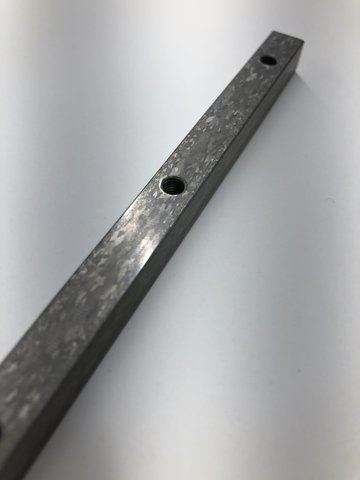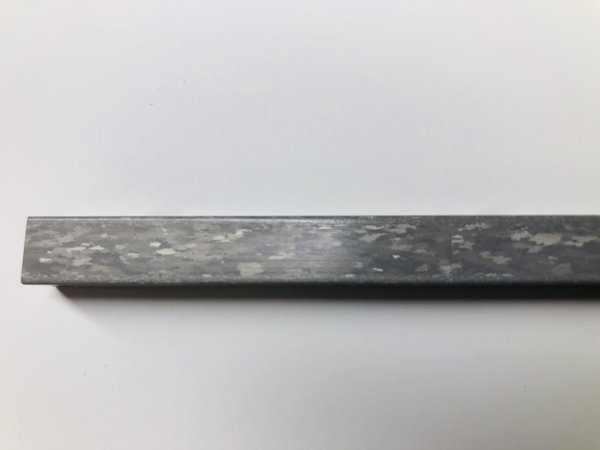Extrusion is a manufacturing method for aluminium components. Extrusion is more efficient than standard machining for parts with a constant cross section and parts can be extruded and cut to exact sizes prior to any further machining operations. It's commonly seen with box section, tubes, bars and other constant profiles.
If not well controlled, the extrusion process can cause defects with anodic coatings as pictured. The anodic coating develops with a mottled appearance, sometimes distinct oval patches or grains can be seen. This is normally caused by uncontrolled cooling of the extruded part during the manufacturing process. At high temperatures, impurities and alloying elements become more mobile and may migrate to the surface the extrusion through the aluminium matrix or agglomerate (come together). The rate at which the piece cools after extrusion affects the microstructure especially at the surface. Major alloying elements include: copper, zinc, magnesium and silicon.
Anodising shows these defects because it is a conversion process that converts aluminium to its oxide form. Different purities of aluminium, yield different colours and brightness. In this case, composition varies across the surface due to the effect described above. With bright areas being areas of high purity and dull, grey areas being lower purity.
The lighting industry uses this purity effect in a positive way by mainly using “super pure” grades of aluminium (1000 series) to retain as much brightness as possible for maximum reflection of light.
Normally, no amount of chemical stripping and re-anodising will fix this issue, mechanical finishing of the surface will be required to skim off the abnormal layer. On rare occasions, these defects may be present through the entire depth of the piece.
It is essential to ensure that heating/cooling is controlled during extrusion to avoid this problem. The design of the die and the other process parameters during extrusion may also have an impact. Depending on the end use of the part and the alloy selected, it may be prudent to include a mechanical finishing operation as standard prior to anodising - this will typically lead to a better looking, more consistent surface finish.
Mechanical finishing is generally grinding, skimming/facing during milling/turning or abrading. Polishing alone is unlikely to be effective. Blasting may improve the finish, but can be another source of variability and should be avoided unless it is to be part of the regular manufacturing sequence.

